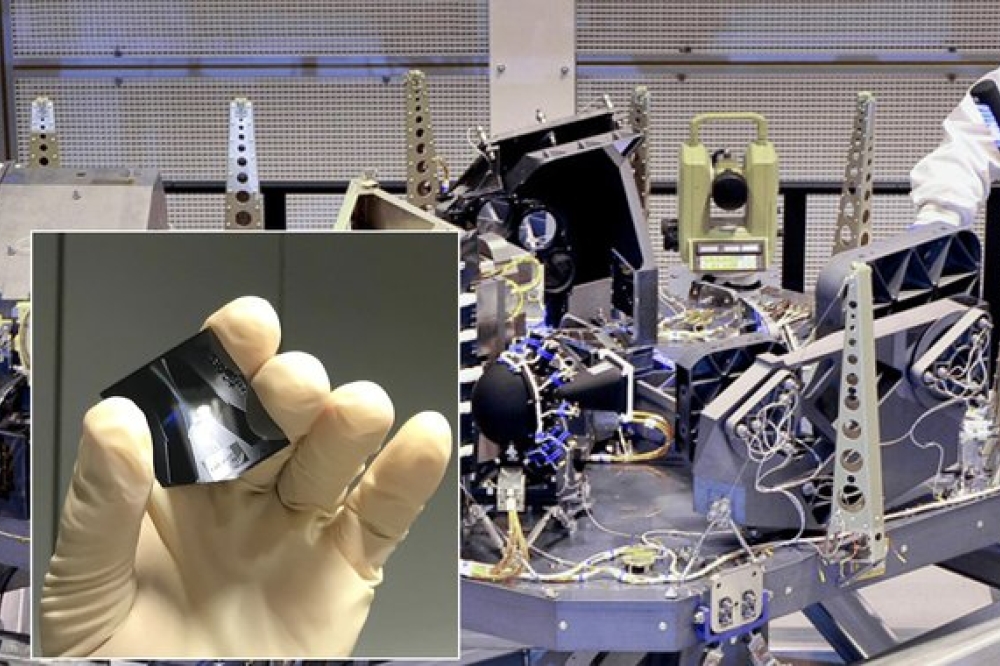Project to miniaturise spectrograph wins €3.4 million

Researchers hope the PICS4SENS project will accelerate the commercialisation of PICs for sensors, advancing astrophysical instruments as well as technology for agriculture and healthcare
The Leibniz Institute for Astrophysics Potsdam (AIP) has announced that the integrated photonics project PICS4SENS has won €3.4 million in funding over a period of four years, after winning last year's StaF call for proposals. PICS4SENS is a joint project of AIP and the Leibniz Institute for High Performance Micrelectronics (IHP) in cooperation with the innoFSPEC transfer laboratory at the University of Potsdam. The project aims to increase the technological maturity and shorten the path to commercialisation of PICs in sensor technology.
In particular, PICS4SENS is developing a spectrograph 'on-a-chip'. This picture gives an idea of what is involved: the realisation of what are traditionally large and expensive high-performance optics in a tiny photonic chip.
Photonics is a modern technology in which the conduction of light (photons in waveguides) is utilised in a similar way to electronics, which is based on the conduction of electric current (electrons in semiconductors). Just as electronic chips are now ubiquitous in computers, smartphones and cars, the industry is working at top speed to develop PICs: a rapidly growing future market according to current market analyses. PICs have already established themselves in computer centres and Internet data communication. Another area of application is still in its infancy: spectroscopy and sensor technology.
According to the AIP, the scientists working in its astrophotonics team, led by Kalaga Madhav, have achieved a leading international position in this field and have developed and utilised various generations of PICs for applications in spectroscopy and interferometry. The institute adds that, with a chip of the type shown in the picture, a spectrograph designed for the near-infrared range was built for the first time in the world with the support of AIP research technology: PAWS, the “Potsdam Arrayed Waveguide Spectrograph.” Here, a highly sensitive image sensor is cooled to a temperature of –190 degrees C in order to electronically record the chip's high-resolution spectrum.
The rather bulky design of the cooling housing for the infrared image sensor compared to the chip shows that miniaturisation has not yet been fully achieved. This is precisely where the PICS4SENS project comes in. The IHP says it has all the prerequisites and expertise to integrate the image sensor into the PIC, bringing together the photonics and electronics.
Researchers hope that this will not only lead to a breakthrough for astrophysical instruments, particularly in space, but also to outstanding innovation potential and future market opportunities in areas such as agricultural technology, mobility, healthcare, food technology and chemistry – future topics that have been prioritised by the 'innoBB2025 plus' innovation strategy and the master plan for the optics and photonics cluster in Berlin and Brandenburg.
Project manager Martin Roth said: “With the Leibniz Institute for Innovative Microelectronics (IHP) in Frankfurt (Oder) and the Leibniz Institute for Astrophysics Potsdam (AIP), the state of Brandenburg has two top performers in top international research, according to the latest evaluations by the Leibniz Association. In cooperation with the innoFSPEC transfer laboratory at the University of Potsdam, the PICS4SENS project has excellent prerequisites for further expanding and utilising our technological lead.”
The StaF-Verbund funding programme aims to promote the strengthening of technological and application-oriented research in research networks of scientific institutions in the state of Brandenburg. It is financed by the European Regional Development Fund (ERDF).
Image credit: Astrium/AIP



































